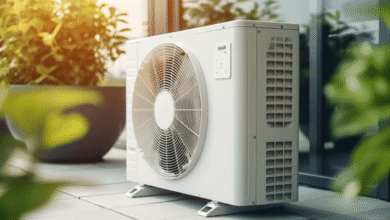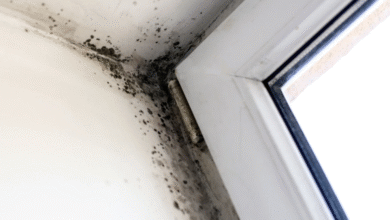Domestic Window Cleaning Checklist for a Streak-Free Finish

Clean, streak-free windows can transform the look and feel of your home, enhancing natural light, curb appeal, and overall hygiene. However, domestic window cleaning often feels like a daunting or ineffective chore—especially when streaks, smudges, and water spots persist despite your best efforts.
The good news? With the right approach, tools, and a clear checklist, you can achieve professional-quality results on your own. This comprehensive guide will walk you through a step-by-step domestic window cleaning checklist to help you achieve spotless, gleaming glass every time.
Why Domestic Window Cleaning Shouldn’t Be Overlooked
Many homeowners clean their windows only when they start to look noticeably dirty. However, routine window cleaning offers benefits that go far beyond appearance:
- Maximized natural light: Dirt and grime block sunlight, making your rooms appear darker and less inviting.
- Extended window lifespan: Regular cleaning prevents long-term damage from hard water, bird droppings, and environmental pollutants.
- Improved indoor air quality: Dust and mildew on window tracks can circulate allergens in the home.
- Enhanced home value and curb appeal: Clean windows make a house look well-maintained from the outside.
- Better mood and energy efficiency: More sunlight indoors can boost your mood and reduce dependency on artificial lighting.
Now, let’s dive into how to clean your windows like a pro using a structured checklist.
See also: Making a House Feel Like Home—Simple Home Improvements That Make a Big Impact
The Ultimate Domestic Window Cleaning Checklist
To get a streak-free finish, it’s not just about what you clean—it’s also about how and in what order you clean. Follow this domestic window cleaning in the North shore checklist step by step for best results.
1. Gather the Right Tools and Supplies
Before you start, make sure you have everything you need. The quality of your tools directly affects the quality of your results.
Here’s what to gather:
- Microfiber cloths or lint-free towels
- Rubber squeegee with a clean blade
- Soft-bristled brush or window scrubber
- Bucket with warm water
- Window cleaning solution (store-bought or homemade)
- Spray bottle
- Step ladder (for hard-to-reach windows)
- Vacuum or small brush for window tracks
- Optional: Vinegar, dish soap, newspaper (for polishing)
2. Choose the Right Time to Clean
Window cleaning should ideally be done on a cloudy or overcast day. Direct sunlight can dry your cleaner too quickly, causing streaks before you even have time to wipe.
Also, avoid cleaning during windy or rainy days. Wind can kick up dust and pollen while you’re working, and rain can re-dirty freshly cleaned glass.
3. Start with the Window Frames and Tracks
Begin your cleaning from the outside in by cleaning the frames, sills, and tracks. These areas often harbor cobwebs, dust, and mildew that can dirty the glass as soon as it’s cleaned.
Steps:
- Use a vacuum or dry brush to remove loose debris from the window tracks and corners.
- Wipe down the frame with a damp microfiber cloth.
- If needed, use a mild detergent and warm water to scrub away stubborn dirt or mold.
Cleaning these areas first prevents grime from dripping down onto your clean glass later.
4. Dust the Glass Surface Before Applying Cleaner
Before you spray any cleaner, dust the glass with a dry microfiber cloth or soft brush. This step is often skipped, but it’s essential to avoid smearing dry debris around the glass surface.
Grit and dust can also scratch the glass when rubbed in with liquid cleaner—so don’t skip this step.
5. Apply Window Cleaning Solution Evenly
Now that your window surface is prepped, spray or apply your cleaning solution. You can use a commercial glass cleaner or make your own with a simple recipe:
DIY Window Cleaning Solution:
- 2 cups of water
- 1/2 cup white vinegar
- 1 teaspoon dish soap
Mix the solution in a spray bottle and shake gently. Spray generously over the glass surface, starting from the top and working your way down.
For larger panes, use a window scrubber or sponge dipped in your bucket of solution to ensure even coverage.
6. Wipe with a Squeegee for a Streak-Free Finish
The squeegee technique is the key to streak-free results. Here’s how to do it properly:
- Place the squeegee at the top corner of the window.
- Pull down vertically or swipe horizontally (pick one method and be consistent).
- Wipe the squeegee blade with a lint-free cloth after each pass.
- Overlap each stroke slightly to prevent streaks or missed spots.
If you prefer not to use a squeegee, use a microfiber cloth to wipe in an “S” motion across the glass, being careful not to leave lint or streaks.
7. Buff the Glass for Extra Shine
Once the glass is clean and dry, buff the surface with a dry microfiber cloth or newspaper for extra shine.
This optional step adds polish and removes any residual haze or moisture. Avoid using paper towels—they often leave lint behind.
8. Clean Interior and Exterior Glass Separately
Many homeowners only clean the inside of their windows, assuming rain will wash the outside. In reality, the outside of windows gets far dirtier, especially if you live near trees, roads, or construction zones.
Make sure to clean both sides separately, and use two sets of cloths—one for interior and one for exterior—to avoid cross-contamination.
9. Check for Streaks and Missed Spots in Natural Light
After you’re done, step back and inspect your windows in natural light. It’s the easiest way to spot streaks, smudges, or areas you may have missed.
Touch up any spots using a dry microfiber cloth and a small spray of cleaner if needed.
10. Maintain Your Windows Regularly
Clean windows don’t stay clean forever. The good news is that maintaining them is easier than deep-cleaning them.
Recommended maintenance schedule:
- Exterior windows: Every 2–3 months
- Interior windows: Every 3–4 months
- Window sills and tracks: Monthly dusting and wiping
Light maintenance between deep cleans can keep your windows looking pristine year-round.
Pro Tips for Better Domestic Window Cleaning
Even with the right checklist, a few expert tips can improve your efficiency and final result:
- Use distilled water in your cleaning mix to prevent mineral deposits or water spots.
- Replace squeegee blades regularly—dull edges can leave streaks.
- Work from top to bottom to prevent drips from dirtying already cleaned areas.
- Avoid abrasive tools (like steel wool) which can scratch glass surfaces.
- Clean screens separately—use a soft brush and mild soap, rinse, and let them dry before replacing.
Common Mistakes to Avoid
Avoiding these common errors will keep your windows in great condition and save time:
- Cleaning on hot, sunny days: This causes streaking due to quick drying.
- Using dirty cloths or sponges: Reusing soiled tools can reapply dirt.
- Skipping the dusting step: Dirt on glass acts like sandpaper when wet.
- Using harsh chemicals: Ammonia-based cleaners can damage tint or sealants.
- Ignoring corners and edges: Streaks often appear here if neglected.
When to Hire a Professional Window Cleaner
While DIY works great for most homes, there are times when calling a professional domestic window cleaner is worth the cost:
- You have multiple stories or hard-to-reach windows
- You’re preparing for a real estate showing or open house
- You don’t have time for thorough cleaning
- Your windows haven’t been cleaned in over a year
- You’re physically unable to reach high or wide panes safely
Professionals have the equipment and experience to deliver flawless, streak-free results in less time.
Final Thoughts
Window cleaning may not be the most glamorous chore, but the results are hard to beat. With this domestic window cleaning checklist, you’ll be equipped to get your windows gleaming without streaks, smudges, or frustration.
By maintaining a routine and using the right techniques, tools, and solutions, you’ll not only enjoy better-looking windows—but also a brighter, more comfortable, and more valuable home.





